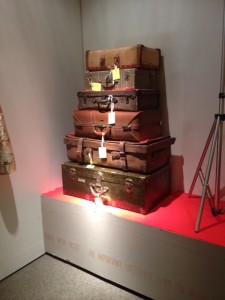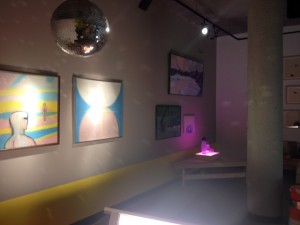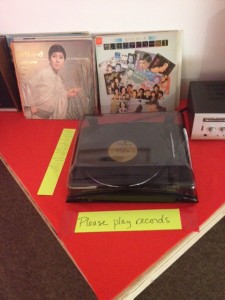Magic Hour: Storytelling as Transformation
“The Instant Coffee Artist Collective takes an unexpected and innovative look at the gems from our permanent collection. Magic Hour is the name of that time just after sunrise or just before sunset, and we are excited to tease out the magic in our archives.” — The Nikkei National Museum & Cultural Centre
Located in the Edmonds area of Burnaby, the Nikkei National Museum serves to “preserve, share, and exhibit” stories and artifacts of Japanese Canadian History. Featured until April 15th, the Magic Hour exhibit — produced by the artist collective Instant Coffee — aims to provide visitors with an interactive, “innovative”, and “unexpected” presentation of the archives housed at the Nikkei Museum.
Although I attended the exhibit on a sunny Sunday afternoon, I was the only person in the small museum for the entirety of my visit. There were no curators or guides — I was left to discover Magic Hour on my own. Aside from a short introductory paragraph near the entrance, the exhibit was void of signage and description. The noticeable lack of explanation and commentary for each of the pieces not only adds to the mystery and “magic” that surrounds these articles, but also allows visitors to generate their own ideas of the artifacts in front of them.

Magic Hour takes visitors on a journey through the immigration experiences of early Japanese settlers arriving in Canada. The one-room exhibit delivers a unique and alternative perspective towards viewing the museum’s collection of artifacts — ranging from suitcases, paintings, documents, and even music — to interact with all bodily senses. Spinning disco balls scattered light across the colourful walls and objects showcased in unique and innovative displays. Visitors are encouraged to play records, and are able to select from a variety of Japanese vinyls — the only source of audio available in the otherwise quiet museum. The music itself transforms the exhibit from the silent to the audible, with the selection of music allowing visitors to add their own own “voice” to the collection. The presentation of the objects themselves defy the standards of what would be expected of a “traditional” exhibition of these objects. This challenging of expectations also applies to how mainstream audiences perceive stories of migration and settlement — like Magic Hour, these stories of movement can be interpreted in many different ways.

In lieu of a static approach, Magic Hour is designed to give its visitors a hands-on and interactive experience with archives usually barricaded behind glass and velvet ropes. Through the many unique ways Instant Coffee showcases these artifacts, these pieces are able to share the journey of migration in such a way that emphasizes the notion of “storytelling as transformation” through the non-traditional way the exhibit is presented. By allowing visitors to openly interact and engage with the exhibit, Magic Hour invites its audiences to construct their own stories and experiences of these artifacts — redefining and reshaping their own expectations, perceptions, and knowledge towards Japanese history and settlement.

The exhibit itself is also expected to change through the course of the show, with several key events marking these alterations. This continuous reshaping of Magic Hour encourages visitors to return to witness these transformations, while also illustrating the fluid and transformative nature of storytelling and history.
Sources:
“Magic Hour by Instant Coffee”. Nikkei National Museum & Cultural Centre. Nikkei Centre, n.d. Web. 1 March 2015.
Greenaway, John Endo. “Magic Hour at the Nikkei National Museum”. The Bulletin: A Journal of Japanese Canadian Community, History, & Culture. 27 February 2015. The Bulletin, 2015. Web. 3 March 2015.
